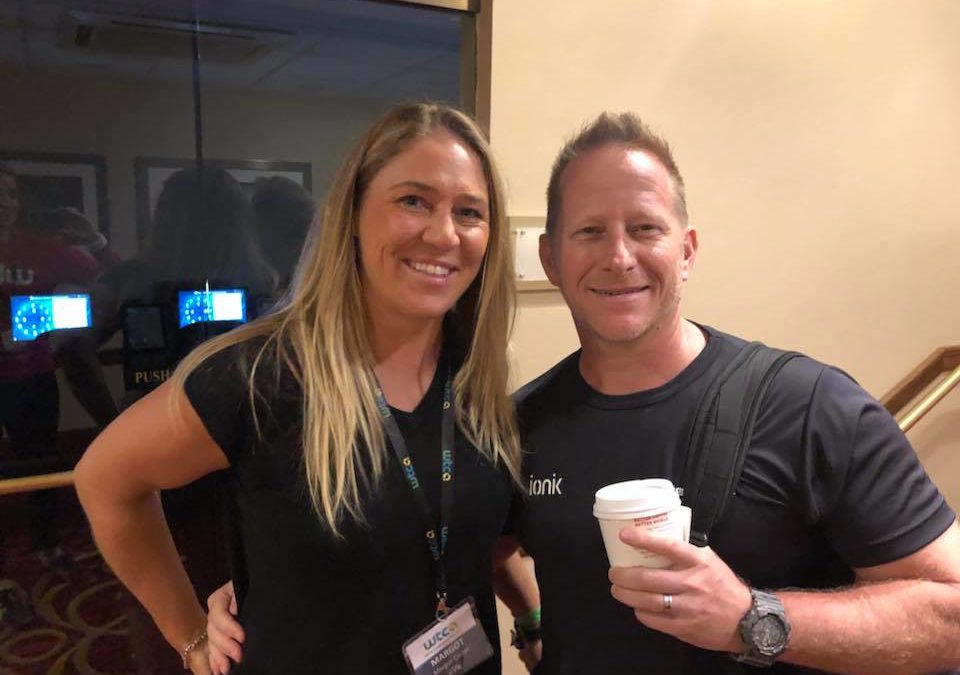For tennis players at every level, success is dependent on so much more than on-court practice. Strength and conditioning has become increasingly more imperative to the training process, particularly for athletes looking to gain a competitive edge over their opponents.
One of the sport’s highly-regarded minds in strength and conditioning is Master Tennis Performance Specialist Dean Hollingworth. Hollingworth began working with tennis players just 10 years ago, but his dedication to improving athletes allowed him a number of opportunities with Tennis Canada’s top female athletes, including Francoise Abanda and Eugenie Bouchard.
Prior to working with these top-level athletes, Hollingworth had no idea just how challenging the sport could be. “When I dove into it, I was really surprised at how difficult it is to train a tennis player,” he explained. “It was a very humbling experience that I took upon myself to do the best possible job I could by diving into it and getting to know as much stuff as a I could about tennis.”
Fast forward to today and Hollingworth has created the Baselinepower series, a sequence of videos specific to improving tennis performance. According to Hollingworth, Baselinepower helps coaches, parents, and players gain access to information that is “valuable, well thought out, and well presented in terms of not just the exercises, but how to perform the exercises properly and develop a series of programs to assist the athlete in achieving better athletic performance.”
Perhaps the most important component of Hollingworth’s coaching lies within plyometrics training. He believes that there are two major benefits to plyometrics – the development of power and injury prevention.
“When I start working with a player, no matter the age, who is interested in developing themselves into a better athlete, it’s always about first step explosivity, being more explosive on that first step. Plyometrics helps athletes have better acceleration on the court,” he explained.
In respect to the injury prevention component, plyometrics training teaches athletes how to properly decelerate, a skill that is vital for female tennis players. “The landing phase of the plyometrics is extremely important, especially with female athletes,” said Hollingworth “Females have the tendency to collapse their knees when they land, so it’s important to learn how to absorb the ground better. Plyometrics are also important for changing direction, so if someone has to have a quick change in direction, you need the right thing happening at the right moment to avoid injury.”
While plyometrics training is a necessity for female athletes, there is no one-size-fits-all method of training. Each player is different and has different needs based on factors such as body type, skill level, and experience with strength and conditioning. “It’s my personal belief that I’m training the individual in front of me,” said Hollingworth. “Through an assessment, you can see what a person needs, and that’s how you start developing their program.”
Generally, women are six-times more likely to suffer from ACL tears than men. According to the research, this is due to the fact that women have trouble absorbing the ground when they land, making plyometrics training all the more important.
In order to combat landing issues, Hollingworth has focused on a unique style of plyometrics training. “It’s important to not only think about jumping up and down or forward, we have to challenge players to move from side to side motions and create a lot of different environmental situations within the gym. We need to teach them to absorb and react to take off again to simulate the conditions that will be taking place on the court,” he said.
However, Hollingworth also recognizes the consequences of overtraining. “I would always err on the side of doing a little less than too much,” he said. “You have to have great communication with the coaching staff and the player. You have to have a plan in place when it comes to training.”
One of the major ways to combat overtraining is through proper rest and recovery. “I think recovery is so important. It’s not so much that people over-train, it’s that they don’t recover enough,” Hollingworth clarified. “Recovery is everything from the foam rolling to stretching to the massages. Nutrition, hydration, when you eat – all those factors play a role in overtraining.”
Nonetheless, it is often difficult to convince high-level athletes to take a day for recovery because they are constantly looking for ways to out-work their competition. So, how does Hollingworth balance his athletes’ desire to continue working hard with the necessity of recovery?
“It’s all about having that relationship with the person you’re working, making sure they believe in you and have confidence in you,” Hollingworth explained. “A lot of times, people perceive more as better when that’s just not the case. I don’t mind more, but it has to be of high quality. More of just being average is not going to get you to where you want to go. Having your body recover and be fresh will take you a lot further than that extra half-hour, 45 minutes on the court or in the weight room.”
If there’s one thing Hollingworth wants athletes to take forward with them, it’s that strength and conditioning training is a crucial piece of the puzzle in respect to high-level performance.
“I think people unfortunately often play tennis to get into shape when you have to get into shape to play tennis,” he said. “It’s something I really truly believe in. I think that if people just focused on getting stronger and being more flexible, their game would take off. They would improve without doing anything else on the court.”

